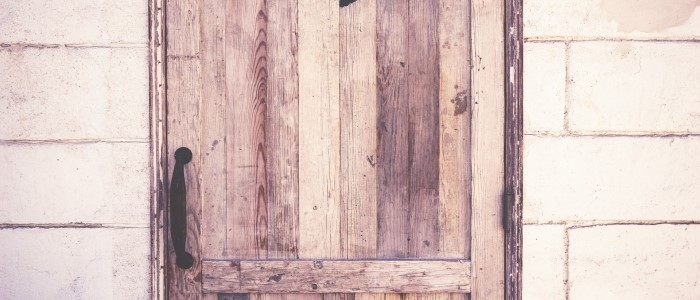While timber boast strong durability, the elements can be unkind to it and over time, your timber doors can deteriorate, the paint starts to crack and look unwelcoming.
In this guide, we take you through the steps on how you can rejuvenate your timber door and make an entrance you can be proud of.
The sign of the times
As always, the best time to spruce up your door is at the first signs of deterioration. If it’s an external door, it’s likely to be battered by the weather. Wind, rain and snow can all hamper your door’s
durability. The heat can also play a part in warping – both external and internal doors.
As well as visible signs such a warping, stains and cracked paint, look out for things like any structural changes – does your door feel much tighter in the frame now? Usually timber will expand and contract, depending on the temperature. This is normal, so don’t worry – things can usually straighten themselves out over time. But if you notice a significant difference then your door may be warped.
To fix this, place the door across two sawhorses, with the warped side facing up. Then place as many heavy objects on the door as possible until the warp is reversed as far as possible without damaging the door. Allow it to cure for as long as possible, but if warping still occurs, your next step is to sand it.
Read on for some top tips on sanding and painting.
Step by step
- Remove the door: While you may think a simple touch-up can be done while the door is still hanging, it’s best to remove the door from the frame (and detach any locks or handles) to do the job right.
The best (and most efficient) way to paint your timber doors is by placing them horizontally on saw horses. This helps to prevent any drips when painting.
- Sand and scrape: sanding timber doors before priming and painting will ensure you get the most professional finish possible.
- Seal:While it’s still on the sawhorse, you should seal the door’s bottom and top edges with a coat of finish. Then put the door back on its hinges before applying the first coat. This will avoid damaging the finish when rehanging.
- Rehang and re-finish:After rehanging, choose a finish and apply a first coat. When painting, we’d advise working in sections, whilst keeping the wood grain in mind will give you the most polished product.
Note: Let the door dry overnight before closing it completely.
Which wood is good?
We’d highly recommend using Accoya® for timber doors. Due to its stability, it greatly reduces the need for maintenance or adjustments as a result of warping, swelling or shrinkage
Accoya®, combines a long established acetylation wood modification technique with cutting edge technology to give it performance properties that surpass those of the best tropical hardwoods. The result of over 80 years’ research and development, it is manufactured using non-toxic processes and timber from well-managed, certified, sustainable sources.
With a minimum 50-year life expectancy in above ground applications and 25 years for below ground, backed by BRE and TRADA, Accoya® is proven to be more resistant to rot; achieving the highest possible British Standard durability rating. It is less susceptible to traditional problems associated with timber such as bow, cup and twist and in tests has been shown to shrink or swell less at least three times less than other common joinery timber species.
For more information on how to bring a new lease of life to your timber doors or want to know more information on what timber we have in stock, be sure to get in touch with a member of our team or take a look at our fantastic product range.

